I have the following data set:
In[55]: usdbrl
Out[56]:
Date Price Open High Low Change STD
0 2016-03-18 3.6128 3.6241 3.6731 3.6051 -0.31 0.069592
1 2016-03-17 3.6241 3.7410 3.7449 3.6020 -3.16 0.069041
2 2016-03-16 3.7422 3.7643 3.8533 3.7302 -0.62 0.068772
3 2016-03-15 3.7656 3.6610 3.7814 3.6528 2.83 0.071474
4 2016-03-14 3.6618 3.5813 3.6631 3.5755 2.23 0.070348
5 2016-03-11 3.5820 3.6204 3.6692 3.5716 -1.09 0.076458
6 2016-03-10 3.6215 3.6835 3.7102 3.6071 -1.72 0.062977
7 2016-03-09 3.6849 3.7543 3.7572 3.6790 -1.88 0.041329
8 2016-03-08 3.7556 3.7826 3.8037 3.7315 -0.72 0.013700
9 2016-03-07 3.7830 3.7573 3.7981 3.7338 0.63 0.000000
I want to plot Price against Date:

But I would like to color the line by a third variable (in my case Date or Change).
Could anybody help with this please?
Thanks.

